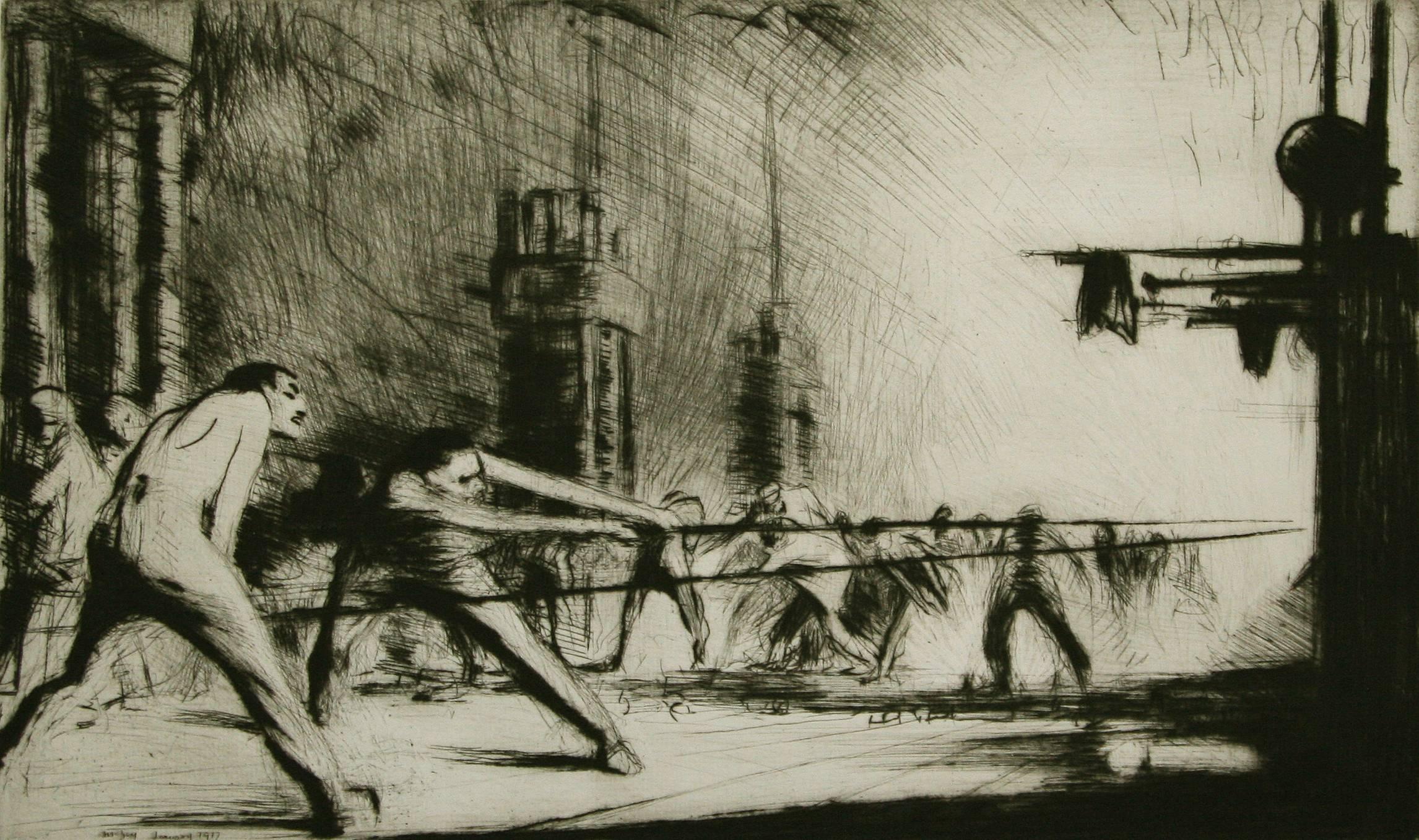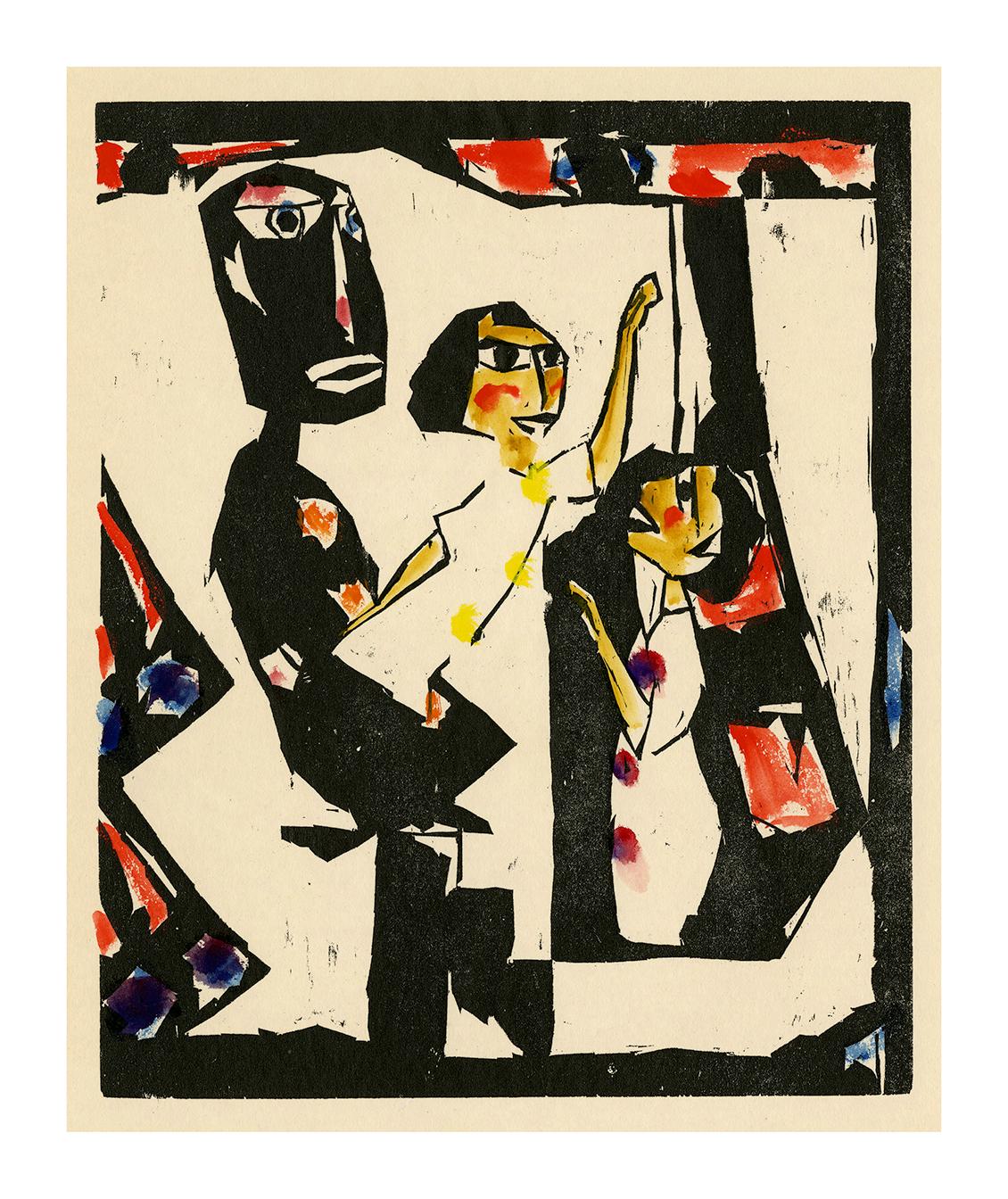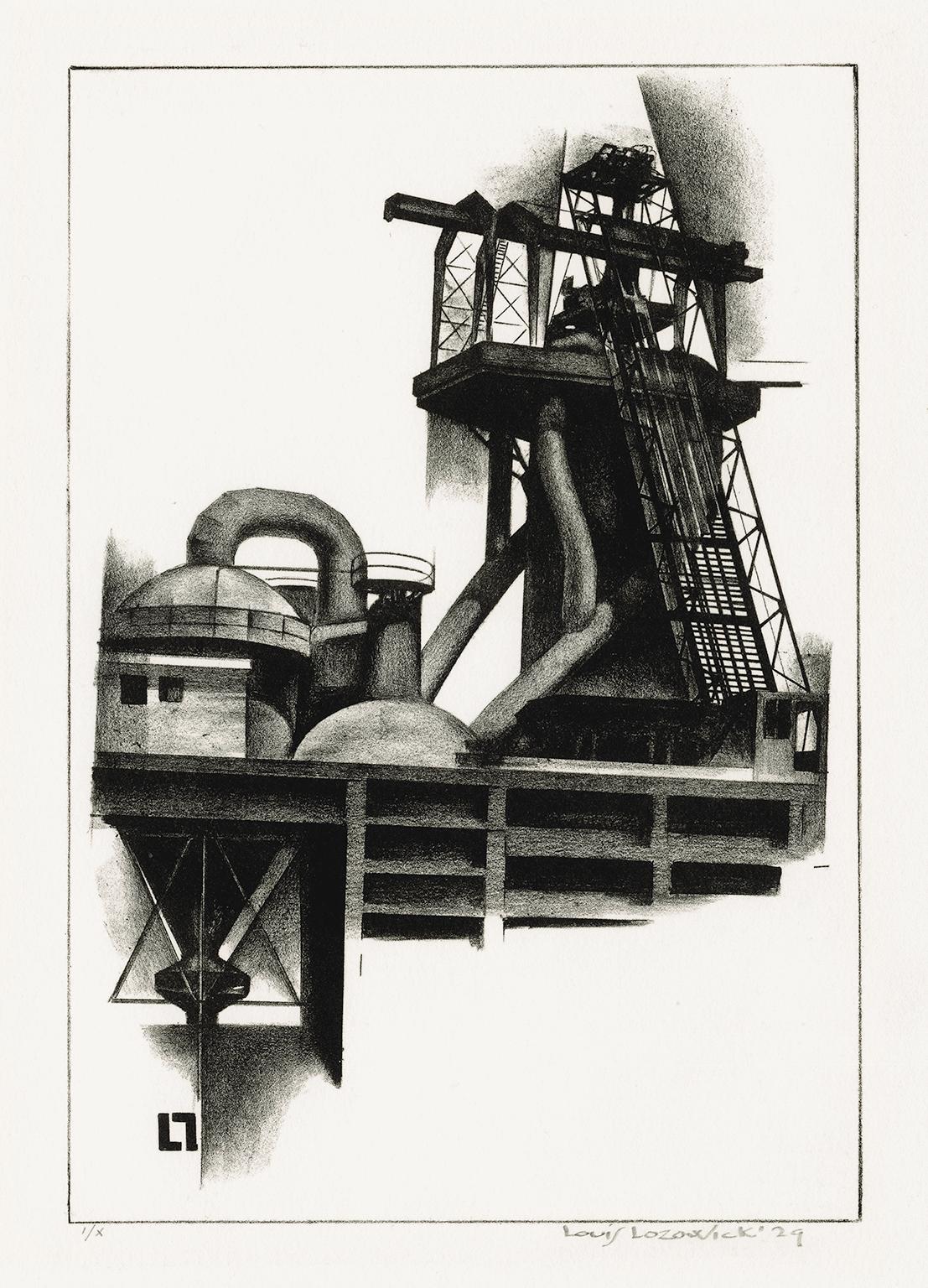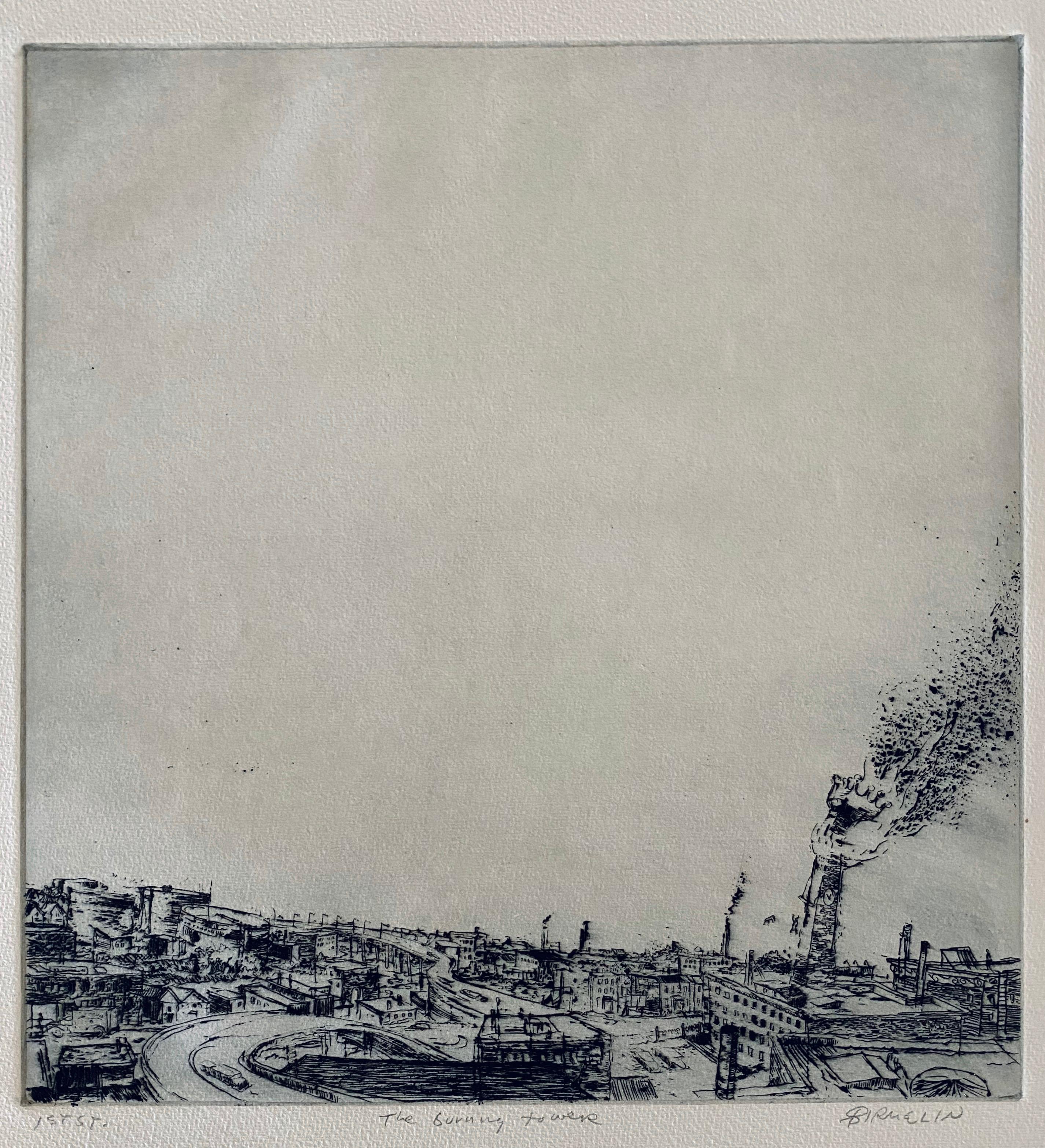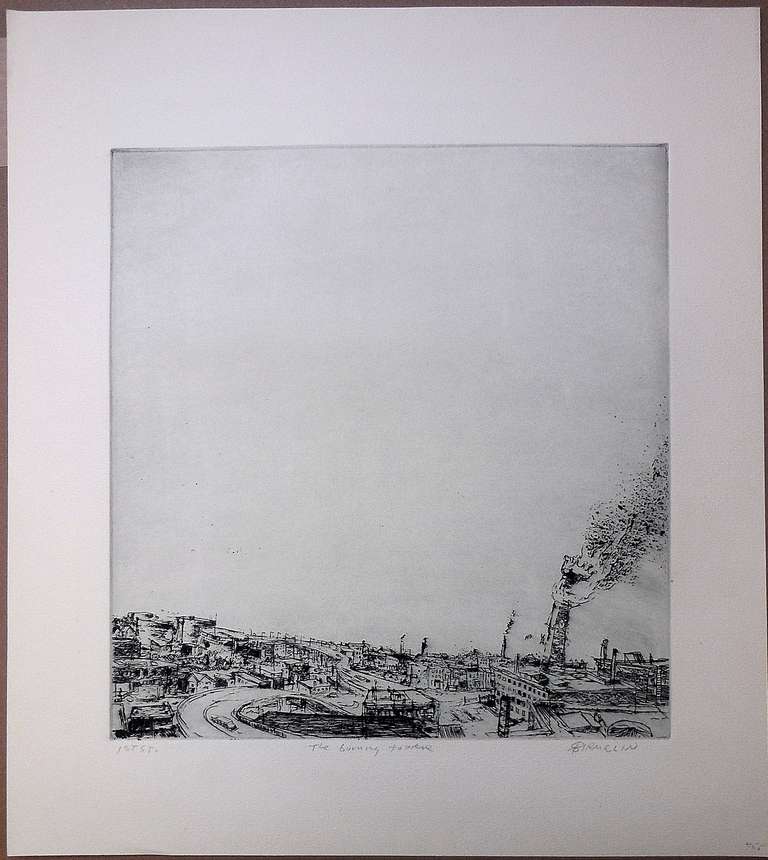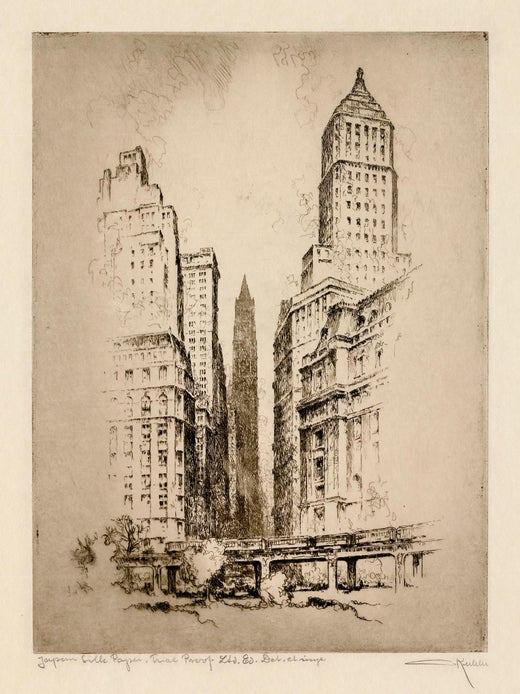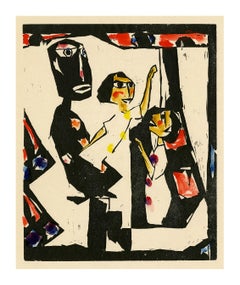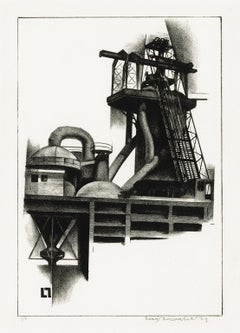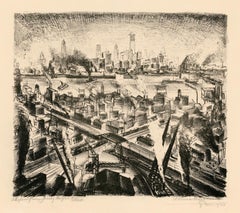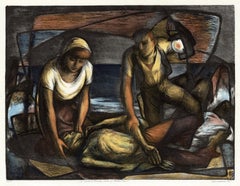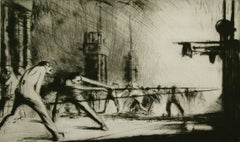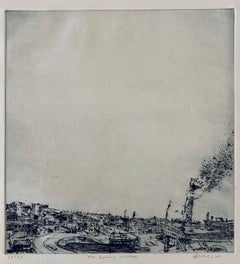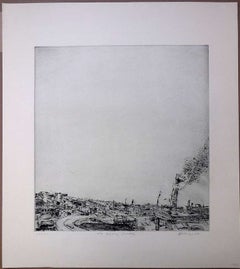Items Similar to 'The Furnace' — American Expressionism
Want more images or videos?
Request additional images or videos from the seller
1 of 3
Otto Kuhler'The Furnace' — American Expressionism1924
1924
$1,800
£1,386.51
€1,583.24
CA$2,568.11
A$2,810.35
CHF 1,473.90
MX$33,589.62
NOK 18,600.52
SEK 17,352.04
DKK 11,823.84
About the Item
Otto Kuhler, 'The Furnace', drypoint, edition 26, 1924, Kennedy 5. Signed and annotated 'Drypoint. Ltd Ed. Del. et imp.' in pencil. Titled in pencil, in the bottom center sheet edge. A superb, richly-inked impression in brown/black ink, with skillfully controlled plate tone on Arches cream laid paper; the full sheet with margins (7/8 to 1 3/4 inches), in excellent condition. Printed by the artist. Very scarce.
Image size 7 3/8 x 5 7/8 inches (187 x 150 mm); sheet size 12 1/4 x 9 5/8 inches (311 x 244 mm).
Provenance: Ex. collection Kennedy Galleries.
ABOUT THE ARTIST
Otto Kuhler (1894, Remscheid, Germany -1977, New York City) was a prolific artist and visionary industrial designer whose creative vision left enduring contributions to the worlds of art and transportation.
Kuhler's early years were marked by a deep fascination with machines and technology, a passion that would later shape his artistic career. After studying engineering in Germany, he immigrated to the United States in 1923, where he began to pursue his artistic ambitions in earnest.
Throughout the 1920s and 1930s, Kuhler's distinctive artistic style began to emerge, characterized by bold colors, geometric forms, and dynamic compositions. His modernist aesthetic caught the attention of the burgeoning industrial design community, leading to collaborations with prominent companies such as the American Locomotive Company (ALCO) and the Electro-Motive Corporation (EMC).
Kuhler's most enduring contributions came in the realm of locomotive design, where his innovative concepts revolutionized the aesthetics and functionality of trains. His streamlined locomotives, with their sleek, futuristic designs, captured the spirit of the modern age and helped define the visual identity of rail travel in the mid-20th century. His innovative influence on industrial design and transportation aesthetics is still felt today.
In addition to his work in industrial design, Kuhler was also a prolific painter, illustrator, and printmaker known for his detailed landscapes and dynamic cityscapes. His work often reflected his fascination with technology and machinery, juxtaposing natural and industrial elements to create compelling visual narratives. Kuhler’s printmaking oeuvre was represented by the renowned Kennedy Galleries in New York City.
Kuhler's legacy endures through his extensive body of work, which is represented in galleries, private collections and museums around the world including the Brooklyn Museum, Cleveland Museum of Art, Denver Public Library, Fine Arts Museums of San Francisco, Henry Ford Museum, National Gallery of Art, National Museum of American History, New Mexico Museum of Art, New York Transit Museum, Railroad Museum of Pennsylvania, Roentgen Museum (Remscheid, Germany), University of Missouri at St. Louis, and the Westmoreland Museum of American Art.
- Creator:Otto Kuhler (1894 - 1977, German)
- Creation Year:1924
- Dimensions:Height: 7.38 in (18.75 cm)Width: 5.88 in (14.94 cm)Depth: 0.01 in (0.26 mm)
- Medium:
- Movement & Style:
- Period:
- Condition:
- Gallery Location:Myrtle Beach, SC
- Reference Number:Seller: 1015311stDibs: LU53234927181
Otto Kuhler
Otto Kuhler was one of the best known industrial designers of the American railroads. According to Trains magazine “he streamstyled more locomotives and railroad cars than Cret, Dreyfuss and Loewy combined.” Kuhler’s extensive concepts for the modernization of the American railroads have repercussions on the railways worldwide until today. Also, Kuhler was a prolific artist of industrial aesthetics and the American West in general.
About the Seller
5.0
Recognized Seller
These prestigious sellers are industry leaders and represent the highest echelon for item quality and design.
Platinum Seller
Premium sellers with a 4.7+ rating and 24-hour response times
Established in 1995
1stDibs seller since 2016
333 sales on 1stDibs
Typical response time: 1 hour
Associations
International Fine Print Dealers Association
- ShippingRetrieving quote...Shipping from: Myrtle Beach, SC
- Return Policy
More From This Seller
View All'Theater' — 1920s German Expressionism
Located in Myrtle Beach, SC
A German Expressionist woodcut, with original hand-coloring in watercolor, depicting a parent and child watching a theatrical production; ...
Category
1920s Expressionist Figurative Prints
Materials
Woodcut
'Corner of Steel Plant' — American Modernism / Precisionism
By Louis Lozowick
Located in Myrtle Beach, SC
Louis Lozowick, 'Corner of Steel Plant', lithograph, 1929, edition 25, and 10 printed in 1972; Flint 21. Signed, titled, dated, and numbered 'I/X' in penci...
Category
1920s American Modern Figurative Prints
Materials
Lithograph
'Skyline from Jersey Heights' — 1930s Modernism
By Adriaan Lubbers
Located in Myrtle Beach, SC
Adriaan Lubbers, 'Skyline from Jersey Heights', lithograph, 1930, edition 25. Signed, titled, and numbered '4/XXV' in pencil. Dated 'Paris 1930' in pencil. A fine impression, on crea...
Category
1930s Modern Figurative Prints
Materials
Lithograph
'A Wind Is Rising and the Rivers Flow' — Mid-Century American Modernism
By Benton Murdoch Spruance
Located in Myrtle Beach, SC
Benton Spruance, 'A Wind is Rising and the Rivers Flow', color lithograph, 1945, edition 40, Fine and Looney 242. Signed, dated, and titled, and annotated 'Ed 40' in pencil. A fine ...
Category
1940s American Modern Figurative Prints
Materials
Lithograph
War Machine — Spanish Civil War, Anti-fascism
By Leon Bibel
Located in Myrtle Beach, SC
Leon Bibel, 'Untitled (War Machine)', brush and ink, c. 1936. Estate stamped, verso. A fine expressionist rendering, on cream wove drawing board, with marg...
Category
1930s American Modern Figurative Drawings and Watercolors
Materials
Ink
'Havoc in Heaven' — Mid-Century Modernism
By Benton Murdoch Spruance
Located in Myrtle Beach, SC
Benton Spruance, 'Havoc in Heaven', lithograph, 1948, edition 30-35, Fine and Looney 270. Signed, titled, and numbered 'Ed 35' in pencil. Initialed in the stone, lower right. A fine,...
Category
1940s American Modern Figurative Prints
Materials
Lithograph
You May Also Like
France at her Furnaces
By James McBey
Located in Storrs, CT
1917. Etching. Hardie 175. 8 x 15 (sheet 10 1/8 x 16 15/16). Edition 76. Slight mat line; otherwise excellent condition. A rich impression printed on antique laid paper with full m...
Category
1910s Modern Interior Prints
Materials
Drypoint, Etching
The Burning Tower, American Modernist Abstract Etching
By Robert A. Birmelin
Located in Surfside, FL
Born in Newark, New Jersey, Robert Birmelin became a professor of fine arts at Queens College in New York, and is known for paintings that magnify through texture the realism of natu...
Category
20th Century American Modern Interior Prints
Materials
Etching
Victor Rebuffo (1903-1983) - Mid 20th Century Woodcut, Fuego En La Ribera
Located in Corsham, GB
An original woodcut print by the listed Italian-Argentinian artist Victor Luciano Rebuffo (1903-1983). Entitled 'Fuego En La Ribera' Fire on the Riverbank. Initialled within the prin...
Category
20th Century Landscape Prints
Materials
Woodcut
The Burning Tower
By Robert A. Birmelin
Located in Surfside, FL
Born in Newark, New Jersey, Robert Birmelin became a professor of fine arts at Queens College in New York, and is known for paintings that magnify through texture the realism of natu...
Category
20th Century American Realist Landscape Prints
Materials
Lithograph
Leonard Pytlak, (Industrial Landscape, New York City)
By Leonard Pytlak
Located in New York, NY
This lithograph is signed and number in pencil. It is numbered 18/18 indicating there were 18 impressions of this subject printed.
Category
1930s Ashcan School Landscape Prints
Materials
Lithograph
The Old Collier - Hand Signed Drypoint - German Expressionism
By Conrad Felixmuller
Located in London, GB
CONRAD FELIXMÜLLER 1897 - 1977
Dresden 1897 - 1977 Berlin (German)
Title: The Old Collier Der alte Kohlenarbeiter, 1921
Technique: Original Hand Signed Drypoint on Wove Paper
Pa...
Category
1920s Expressionist Figurative Prints
Materials
Drypoint
